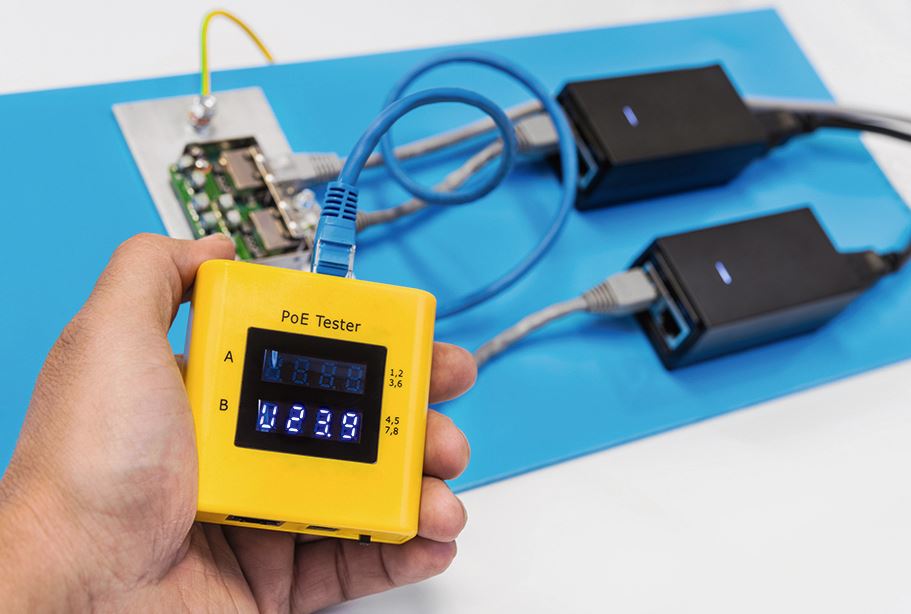Measurement technology for networks
Everyone who operates a corporate and telecommunications network will at some point be in the situation of having to perform measurements: on the one hand, to check the quality of the cabling during an acceptance test; on the other hand, to want to identify transmission errors during subsequent operation; but also generally to check performance.
With regard to the testing of networks, it is important - in addition to the apparent analysis of the cabling - with the purpose of testing the cable category (Cat 5, 6, etc.) incl. structure (shielding, wire cross-section), also to select the appropriate measuring devices. The selection of devices from manufacturers such as Fluke Networks, Ideal Industries, netAlly, Netscout, etc. is sometimes unmanageable. Very simple network testers for copper cables start at 30 to 40 Swiss francs, professional models cost more than 1000 times as much as the simple devices. In order to separate the wheat from the chaff or to find the appropriate device for the respective purpose, the devices can be classified into different application categories: The very simple devices only check whether the connection between two cable terminations has electrical continuity and whether wire pairs are crossed or interchanged.

So-called Verification tester are of higher quality than continuity testers. They also test the basic cable continuity. In addition, there is the possibility of finding cable connections via so-called "toners", e.g. if the documentation has been carried out inadequately. Some of them offer the possibility to measure the cable length or the distance to a cable break or a short circuit by means of TDR (Time Domain Reflectometer). They therefore work on physical layer 1 (physical transmission layer) of the OSI model and thus verify the electrical signaling and the physical cabling components. The OSI model (Open Systems Interconnection Model) is a reference model for network protocols as a layered architecture. Another feature that can be helpful when PoE (PoE: Pover over Ethernet) devices malfunction is the ability of some testers to perform PoE switch verification. This determines the PoE class that can be supplied by the switch and thus also whether a switch can provide sufficient voltage for the PoE end device and via which pairs the voltage supply takes place.
Qualification tester offer, in addition to the possibilities of the verification testers, additional tests to check existing cabling for compliance with new requirements and also to be able to carry out more in-depth troubleshooting. They offer the additional benefit of qualifying the cabling bandwidth and identifying errors that impair it. They thus provide information as to whether a link incl. patch cable is qualified for 10/100Base-T or Gigabit. Nevertheless, just like verifiers, they work on layer 1 of the OSI model. The added value or surcharge compared to a verifier must therefore be examined carefully. In addition, the qualifier does not provide any proof of performance, as is the case with a certifier.
Certification tester guarantee compliance with industry standards and are required by many structured cabling manufacturers before they provide their warranties for new installations. Certification testers indicate whether a connection is compliant with a TIA (Telecommunication Industry Association) category or ISO (International Organization for Standardization) class, such as Category Cat 6 or Class E. In other words, they provide actual "pass" or "fail" information for compliance with relevant industry standards for structured cabling by injecting high-frequency signals into the line. Tests on copper and fiber optic cables can be performed equally here, working only at layer 1 of the OSI model. Software for exporting extensive data and reports provides options for digital documentation of the measurement results.
The Transmision tester offer, compared to the aforementioned devices, the possibility to perform network measurements also on layers 2 and 3 of the OSI model for copper as well as for fiber optic cabling in both LAN (Local Area Network) and WAN (Wide Area Network). With transmission testers, network and PoE load tests are thus possible, as well as ping tests, switch port identification and network configuration checks.
This technical report originally appeared in the printed edition SicherheitsForum 5-2021.
You want to read the articles of this issue? Then close right now here a subscription.









